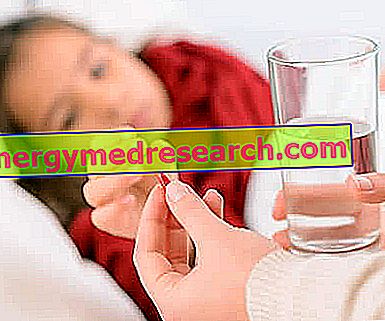Definition
The fifth disease is a childhood infectious disease also known as "infectious erythema", "megaloeritema epidemic" or "slapped cheek disease".
This pathology occurs mainly in children and adolescents between the ages of 5 and 15, but in some cases it can also affect adults.
Causes
The fifth disease is caused by a viral infection supported by Parvovirus B19, otherwise known as Erythrovirus B19.
Symptoms
The characteristic symptoms of the fifth disease are constituted by cutaneous manifestations that appear in the form of reddish spots that can itch. These spots can also be in relief and expand throughout the body area, especially in the arms, legs, buttocks, trunk and cheeks. Furthermore, the cheeks can swell and redden, and it is precisely from these manifestations that the name "slapped cheek disease" derives.
Other symptoms that may occur in children with fifth disease are: fever, headache, rhinitis, joint pain and flu.
Generally, the fifth disease does not lead to complications. However, in some sensitive subjects parvovirus B19 infection can cause acute hemolytic anemia accompanied by leukopenia, decreased red blood cells and disappearance of reticulocytes.
Information on the Fifth Disease - Drugs for the Treatment of the Fifth Disease is not intended to replace the direct relationship between health professional and patient. Always consult your doctor and / or specialist before taking Fifth Disease - Fifth Disease Medication.
drugs
In most cases, the fifth disease presents with a rather mild symptomatology and tends to resolve spontaneously within a few days or weeks, without resorting to the use of drugs.
However - even if they do not need a pharmacological treatment - it is very important that the patients suffering from the fifth disease are considered and, above all, that they do not expose themselves to sunlight and UV radiation, as a worsening of the typical skin this pathology.
In some cases, the doctor may decide to prescribe symptomatic drug therapy to treat fever, joint pain and itching that may occur in patients who have contracted the disease. In this regard, the drugs most used to alleviate the symptoms of the fifth disease are paracetamol and antihistamines.

Paracetamol
Paracetamol is definitely the drug of choice to counteract the fever caused by the fifth disease, thanks to its marked antipyretic properties. Moreover, this active ingredient is also endowed with analgesic properties and, for this reason, it can be useful to counteract the joint pain caused by the pathology.
Paracetamol (Tachipirina ®, Efferalgan ®, Panadol ®) is available in many pharmaceutical formulations suitable for different routes of administration, including the oral, parenteral and rectal routes.
The dose of paracetamol to be administered varies according to the body weight and the age of the child. The doctor will prescribe the most suitable pharmaceutical formulation for each patient and will provide information on the amount of drug to be used and the frequency of administration.
Antihistamines
In some cases, the doctor may decide to prescribe the use of antihistamine drugs to counteract the itching that can occur in association with the typical skin manifestations of the fifth disease.
Among the various active ingredients that can be used, we recall:
- Oxatomide (Tinset ®): the oxatomide is a first generation antihistamine available in pharmaceutical formulations suitable for oral or topical administration.
When administered orally, the dosage of oxatomide must be established by the doctor, depending on the age and body weight of the child.
When, on the other hand, pharmaceutical formulations are used for cutaneous use based on oxatomide, it is advisable to apply the product 2-3 times a day, exclusively on circumscribed areas. Furthermore, if the oxatomid is used for cutaneous use, the application of the product with occlusive bandages must be avoided.



